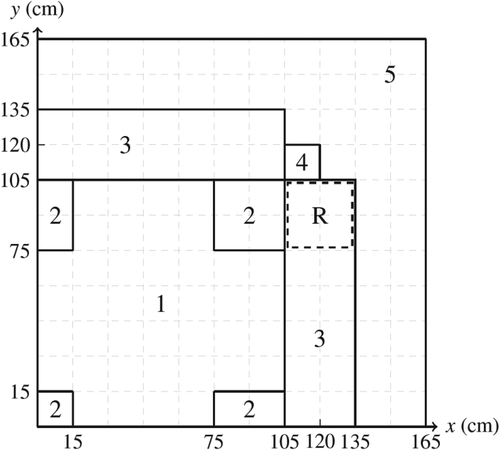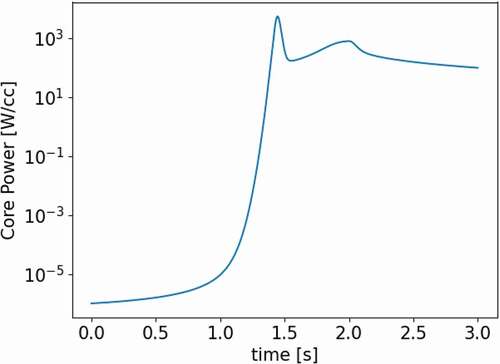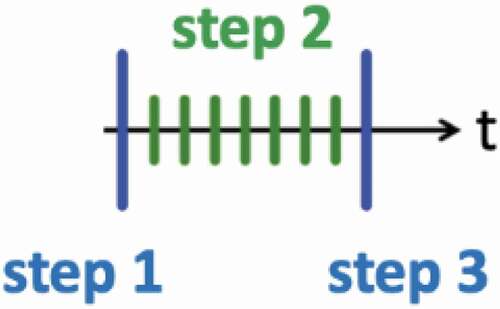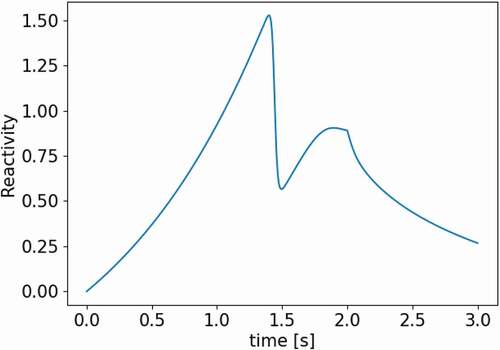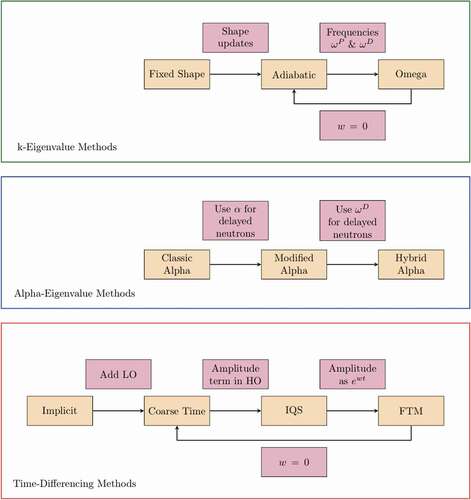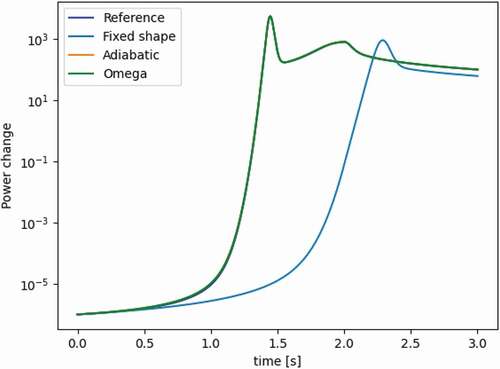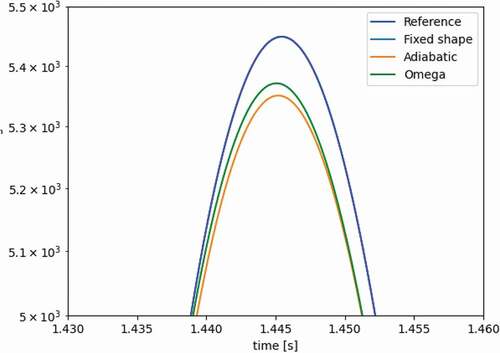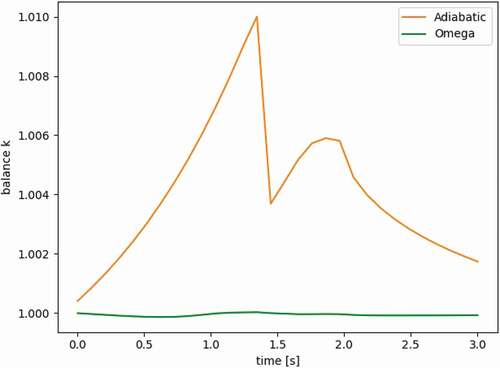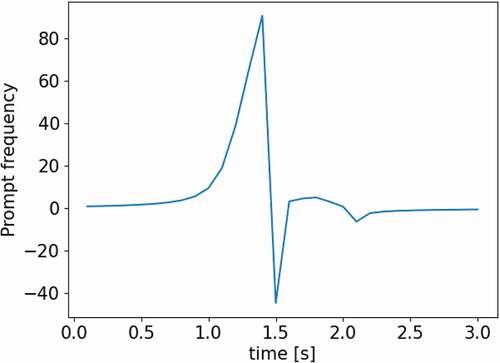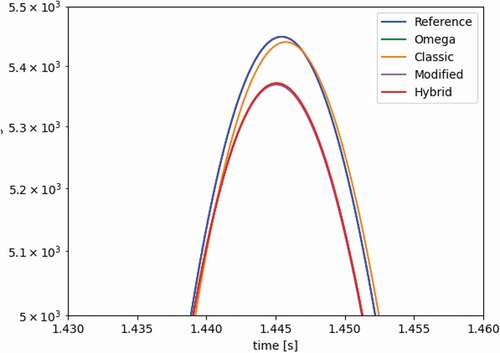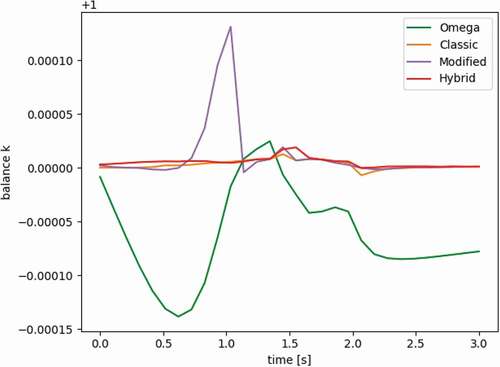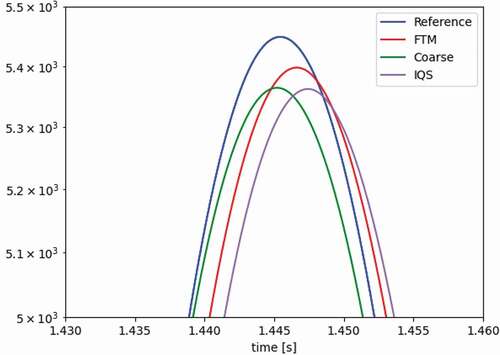Figures & data
Fig. 1. 2D-LRA geometry.Citation11

Fig. 3. Assembly power densities normalized to 1 W/cm3 at steady state, error with respect to results by Smith.Citation12
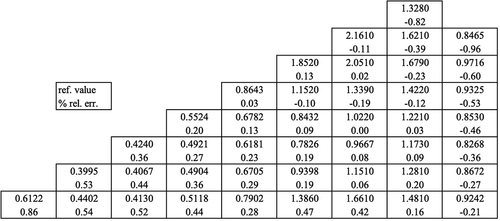
TABLE I Sensitivity of the Transient Results on Time Step Size: Comparison with a Fine-Time Solution
Fig. 11. Precursor frequencies for each delayed neutron group in the first cell of the geometry as calculated by the omega method (in units of inverse seconds).
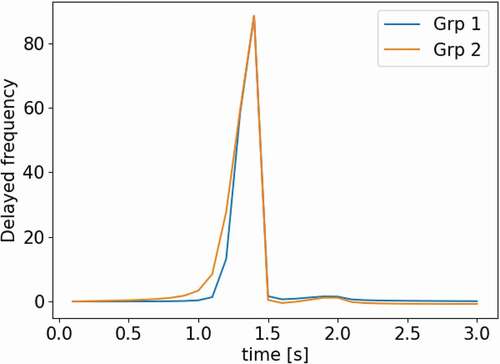
Fig. 12. Spatial distribution of delayed frequencies for precursor group 2 at different points in time, as calculated by the omega method (in units of inverse seconds).
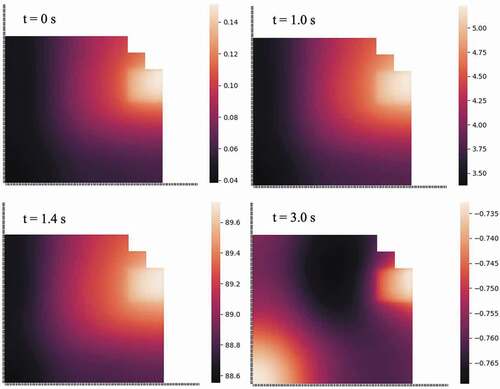
TABLE II Sensitivity of the Adiabatic Method to Outer Time Step Size
TABLE III Sensitivity of the Omega Method to Outer Time Step Size
Fig. 13. Normalized assembly power densities at the peak for adiabatic versus omega. In green and red are errors that are lower and higher for omega method, respectively.
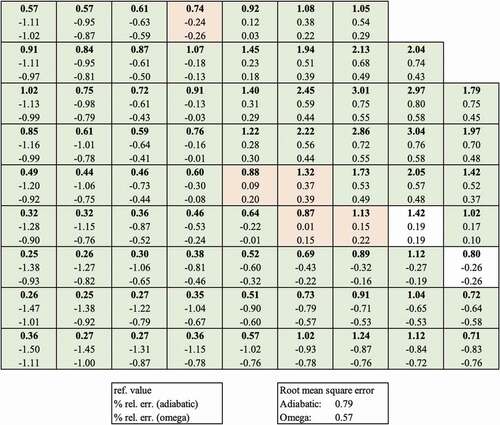
Fig. 14. Assembly temperatures at the end of transient for adiabatic versus omega. In green and red are errors that are lower and higher for omega method, respectively.
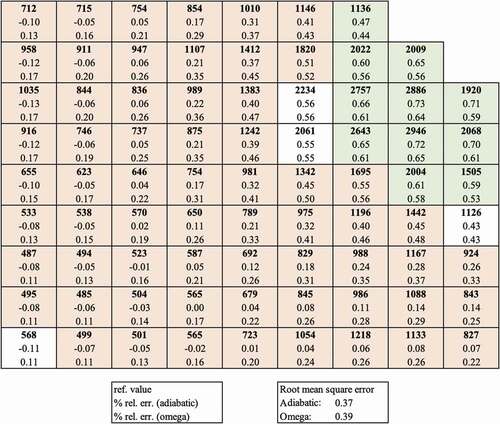
TABLE IV Alpha Eigenvalue Results, Obtained with 0.1 s Outer Time Steps
Fig. 18. Normalized assembly power densities at the peak for modified versus hybrid alpha. In green and red are errors that are lower or higher for hybrid, respectively.
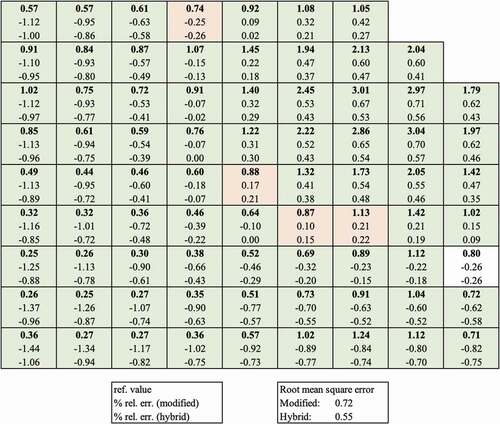
Fig. 19. Assembly temperatures at the end of transient for modified versus hybrid alpha. In green and red are errors that are lower or higher for hybrid, respectively.
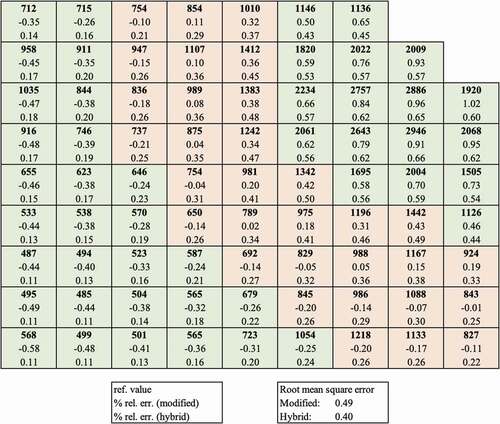
TABLE V Sensitivity of the Coarse Time Integration Method to Outer Time Step Size
TABLE VI Sensitivity of the Stripped-Down Coarse Time Integration Method to Outer Time Step Size
TABLE VII Time-Differencing Results, Obtained with 0.01 s Outer Time Steps
Fig. 20. Comparing prompt frequencies in the FTM to the amplitude derivative term in the IQS method.
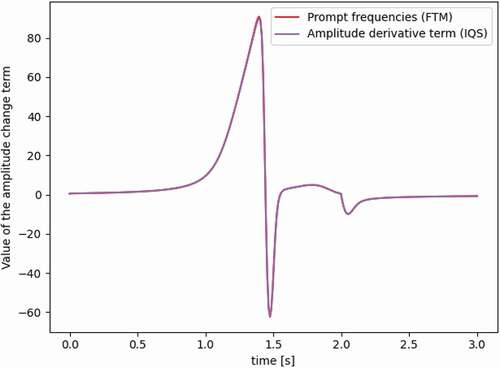
Fig. 22. Normalized assembly power densities at the peak for the IQS method versus the FTM. In green and red are errors that are lower and higher for FTM, respectively.
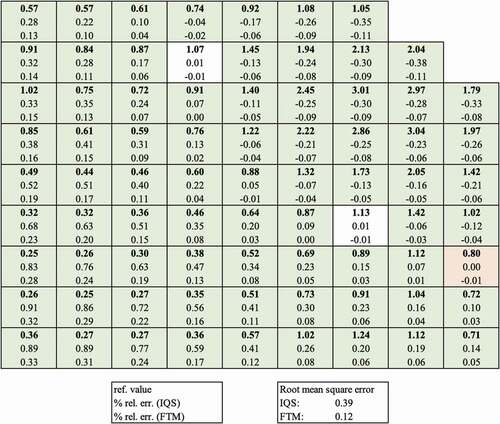
Fig. 23. Assembly temperatures at the end of transient for the IQS method versus the FTM. In green and red are errors that are lower and higher for FTM, respectively.
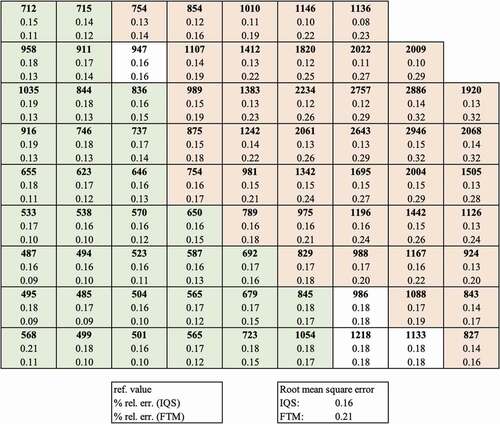
TABLE VIII Impact of Frequencies on Peak Power RMS Error
Fig. A.1. 2D-LRA geometry.Citation11
